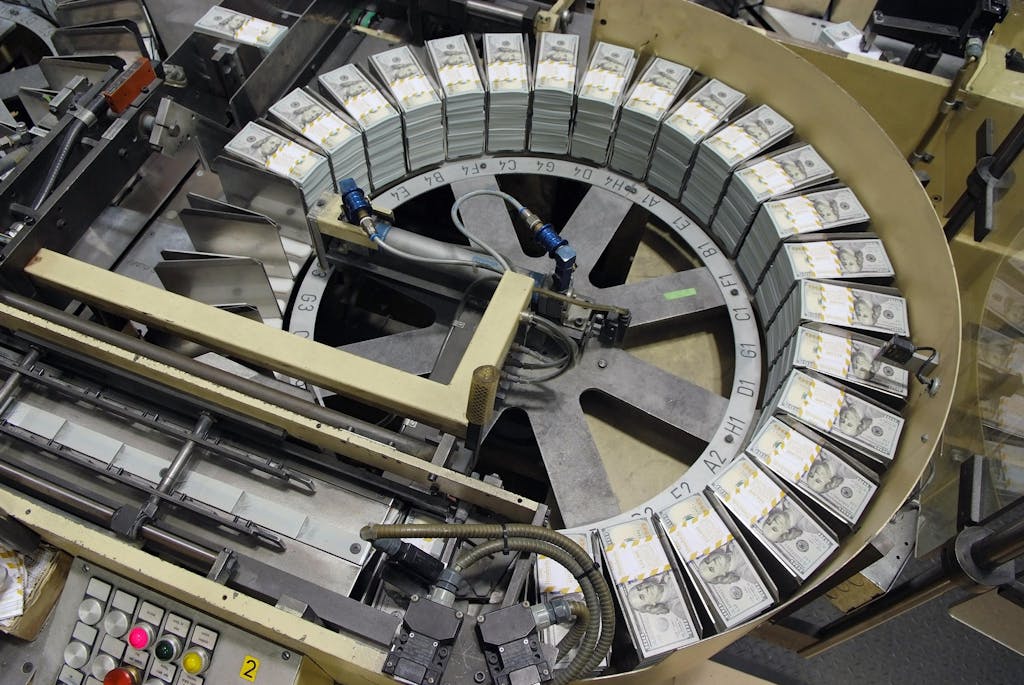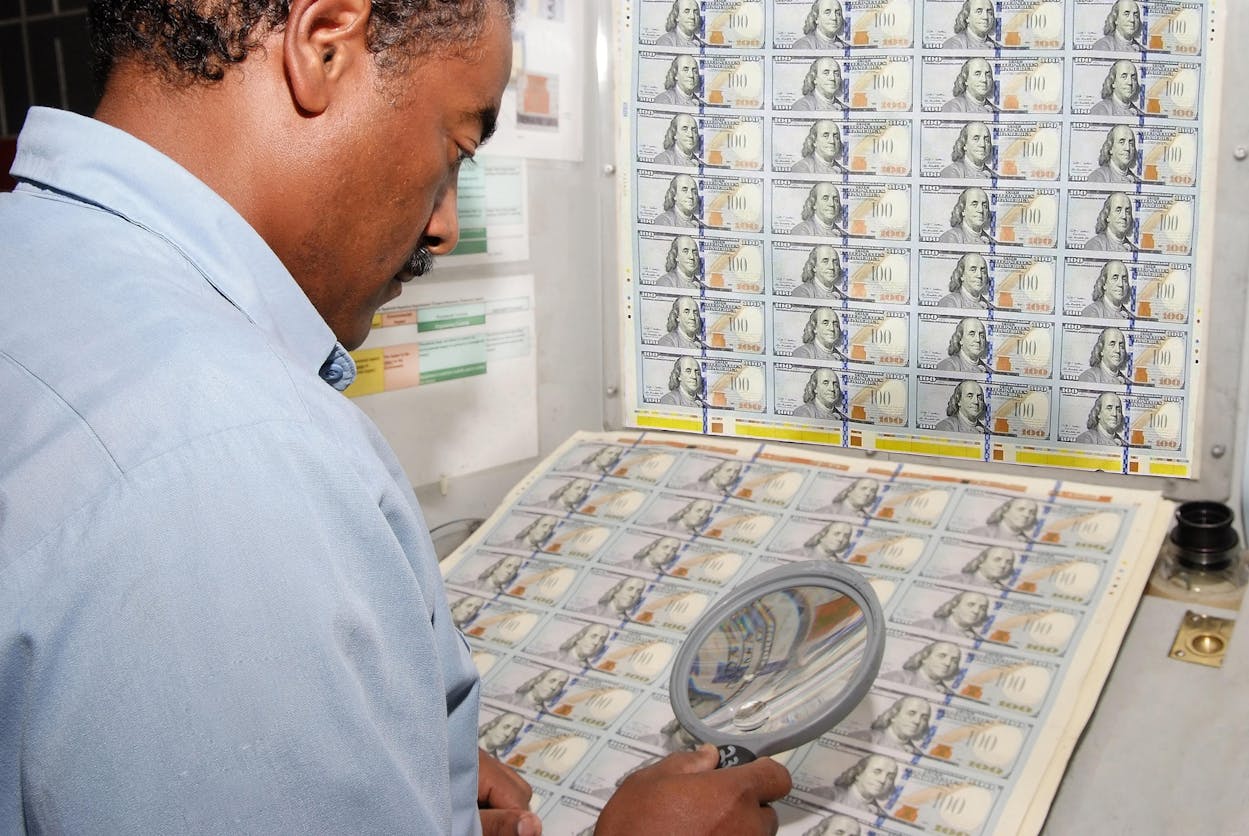As the U.S. government’s security printer, the Bureau of Engraving and Printing (BEP) is responsible for the design, engraving, and printing of all U.S. currency.
The BEP prints billions of dollars—referred to as Federal Reserve notes—each year for delivery to the Federal Reserve System. According to the Federal Reserve, there is more than $2 trillion worth of Federal Reserve notes in circulation.
The BEP is one of the largest currency printing operations in the world with facilities in Washington, DC, and Fort Worth, Texas. More than half of the nation’s currency order is produced in Fort Worth.
Current BEP currency production is quite different from its beginnings in 1862, which consisted of a handful of people separating notes with a hand-cranked machine in the basement of the Department of the Treasury building.
Technology has brought the BEP a long way to a state-of-the-art manufacturing operation producing U.S. paper currency.

The production of this currency is not an easy or simple task, but one that involves highly trained and skilled craftspeople, specialized equipment, and a combination of traditional old world printing techniques merged with sophisticated, cutting-edge technology. Overall, there are numerous, distinctive steps required in the production process.
With the introduction of redesigned currency, subtle background colors were added to the redesigned notes to make them more secure and difficult to counterfeit. The design was applied to the $5, $10, $20, $50, and $100 notes. Circulation of the series began during fall 2003, with the introduction of the redesigned $20 note. It continued with the $50 note in 2004, the $10 note in 2006, the $5 note in 2008, and the $100 note in 2013.
The redesigned notes retain the same size as previous notes and use similar portraits and historical images to maintain an American look and feel.
Security features maintained in the enhanced Federal Reserve notes include a portrait watermark visible when held up to a light, two numeric watermarks on the $5 notes, an enhanced security thread that glows under an ultraviolet light, micro printing, improved color shifting ink that changes color when the note is tilted, and on the newly redesigned $100 notes, a 3D security ribbon and enhanced, raised printing.
While the percentage of counterfeit notes in circulation remains small, advances in technology have brought forth an increase in computer generated counterfeit notes. United States paper currency is redesigned as a way to protect your hard-earned money by staying ahead of advancing technologies and tech-savvy counterfeiters.
Know Your Money
Even with the most technologically advanced security features, it is you—the educated user of U.S. currency—who continues to be the first and best line of defense against counterfeiting.
Protect yourself by learning about how to check the security features in current and previous designs of the $1, $2, $5, $10, $20, $50, and $100 notes by visiting www.bep.gov.
Learn How Money is Made
The BEP Tour and Visitor Centers in Washington, DC, and Fort Worth remain closed due to the ongoing pandemic, but you can still learn how money is made by visiting www.bep.gov and www.uscurrency.gov. The BEP continues to monitor the situation and will post tour and visitor center updates online at www.bep.gov as soon as they are available.







